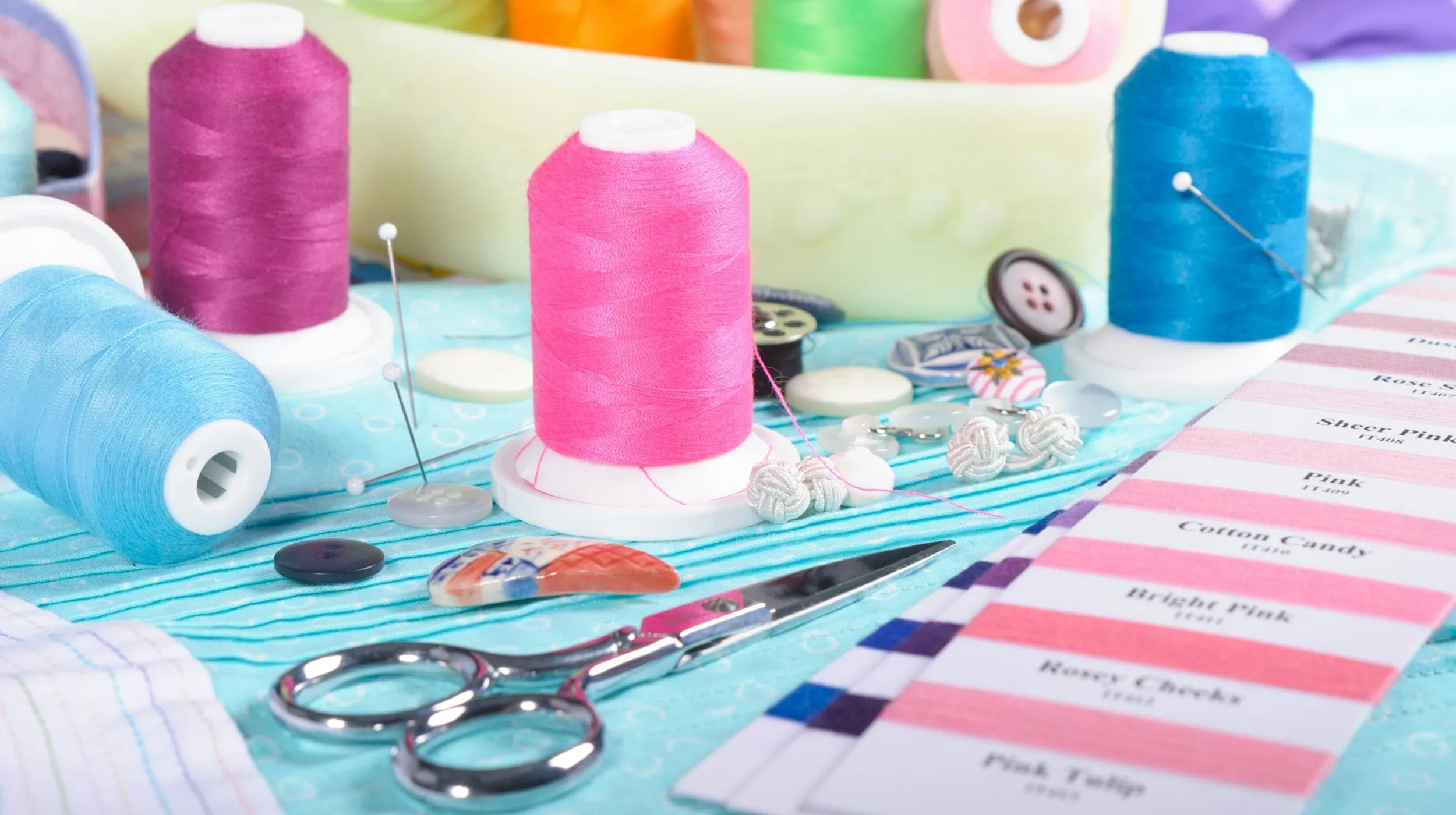After years of watching YouTube tutorials, poring over books, and spending way too much money on supplies and tools, you’re ready to turn your DIY craft hobby into a business (and perhaps finally justify to your family all the time and money you’ve spent perfecting your craft). With creative energy pulsing through your veins, you’re itching to sell crafts online through your own Etsy shop.
But let’s take a step back. Before you dive into the fantastic world of owning your own DIY craft business, you have a few very important things to do before you start selling.
Transitioning from craft fairs to online selling
Moving from in-person craft fairs to online selling can be a big change, but it offers many benefits. Let’s explore each benefit and how to successfully make the transition to selling online.
Benefits of moving online
Taking your craft business online opens the door to new possibilities, including:
- Lower your risk of burnout by setting your own pace
- Connect with customers across the globe
- Build a more flexible schedule that works for your lifestyle
- Grow your income by selling finished pieces, offering virtual classes, or launching digital downloads
Making the move online might seem like a big leap, but it’s a great first step toward long-term growth. Start with what you know, stay focused on your audience, and let your creativity drive your success.
Tips for making the transition
A successful transition to selling crafts online requires a bit of planning. Keep these tips in mind as you go:
- Reflect on your business goals: Do you want more freedom, the ability to travel, or a flexible schedule? Online selling gives you these abilities and more!
- Embrace location freedom: Work from home, a café, or while traveling, not just at craft fairs.
- Learn the basics of online selling: Create an online store, join a marketplace, and learn about packaging and shipping as you go
- Diversify your offerings: Try new products or digital options like workshops or downloadable patterns.
- Build an online audience: Focus on creating real relationships with followers via email and social media
- Take small steps: Start with a few products and expand your offerings as you grow.
1. Choose a name for your business
Grab a piece of paper (or tablet) and a writing utensil and let the creative juices flow. Write down every single business name idea that pops into your head, regardless of how mundane or absurd it sounds. Your business name might not come to you right away, so keep a notebook handy because you never know when the mood will strike. You can use a free business name generator to help you get started.
Tips for choosing a business name
- Use your name, a nickname, or something meaningful like a pet or location
- List words that describe your craft, such as colors, emotions, or materials
- Use a thesaurus to find unique alternatives
- Combine concepts to create a new word
- Make a mood board to spot recurring themes and inspiration
- Avoid names that are too specific, so you don’t limit your brand as your interests evolve
Always check that your chosen name isn’t already in use by searching the United States Patent and Trademark Office database and on social media. Learn more about how to check if a business name is taken here.
2. Buy your domain name
Now that you have your name figured out, the next thing you need to sell crafts online is your own domain name. Even if you intend to sell on a marketplace like Etsy, do not skip this step. Go to GoDaddy, put your business name into the bar at the top, and then follow the instructions. You have the option to choose one extension (such as .com) or several, such as .jewelry, .shop, or .design. Get your domain name early to ensure it’s available for your business. You’ll need one even if you plan to sell on a marketplace like Etsy.
3. Secure your social media handles
Next, create social media accounts using your new business name as your handle. Set up accounts on all of the major social media networks where your target customers spend their time, such as X, Facebook, Pinterest, Instagram, Snapchat, YouTube, Bluesky, and TikTok. Even if you have no intention of using any of these social media sites to sell crafts online, it’s better to have them reserved for your business than to realize later that someone has already registered an account under your business name.
Learn more about how to do social media, which profiles you should focus on first, and when the best times are to post on Instagram.
4. Write a simple business plan
We know what you’re thinking. You’re a creative type; you don’t need a business plan. You can just wing it. Trust us, writing a business plan will help you sell handmade items online, and it doesn’t have to be difficult.
A business plan is more than a useful exercise for anyone who wants to sell crafts online. It’s also required if you ever apply for a bank loan.
It can be as basic as a one-page document that lists what you make, a mission statement (your why for running your business), who your customers are (the more specific, the better), where you will sell (online, craft shows, stores/galleries), and your financial goals. Read this terrific post for tips on finding your unique selling proposition.
5. Register your craft business
You’re on your way to being an entrepreneur – congratulations! But you need to make sure you start your business legally.
Choose your business structure
Pick a legal structure that matches your business goals and setup:
- Sole Proprietorship: Ideal for solo sellers.
- Partnership: Best for two or more people sharing ownership and responsibilities.
- Limited Liability Company (LLC): Offers flexibility and protects personal assets. Explore the different LLC types to find the right fit.
- Corporation: Suited for larger businesses or those seeking outside investment.
Make it legal
Register your business name with your state or local government if required. This helps establish your brand and may be necessary to open a business bank account.
Obtain necessary licenses and permits
Depending on your location and what you sell, you may need specific business licenses or permits. These may include a general business license, a home occupation permit (if you work from home), or permits for selling at events or online. Check with your state to see what you need.
Apply for tax IDs
You may need an Employer Identification Number (EIN) from the IRS, even if you don’t plan to hire employees. It’s typically required for opening a business bank account, filing taxes, and managing payroll as your business expands. Some states also require a state tax ID for collecting and remitting sales tax. You can get an EIN and state tax ID through the IRS website.
Consider trademarks
If your business name, logo, or product designs are unique, consider applying for a trademark. This protects your brand identity and helps prevent others from using similar names or designs. Search the United States Patent and Trademark Office database before applying to make sure your idea isn’t already in use.
6. Pick a platform (or two!) to sell your crafts on
It’s time to figure out how and where you will start selling. Will you do it on a platform specific to selling crafts, like Etsy? Would you prefer a virtual storefront with more customization options, such as a GoDaddy Online Store? Or would you like more creative freedom to build your own site using a platform like WordPress? Let’s take a look at each option so you can make the right decision.
Create your own website
Creating your own website is one of the best ways to sell your crafts online. With your own site, you have full control over your brand, customer experience, and profits without marketplace fees or restrictions.
One great strategy is to sell on both your own website and on marketplaces. You can feature your top products on marketplace sites and link back to your store for more options and information. This maximizes your reach and increases your chance of making sales.
Sell your crafts on Instagram
Instagram makes it easy to turn posts into product showcases. With product tagging, shoppers can tap on an image and go straight to your store to buy. This feature is only available on certain platforms, so make sure your setup supports it. Want help getting started? Check out this step-by-step guide on how to sell on Instagram.
Sell your crafts on Facebook Marketplace
Facebook is a powerful place to grow your craft business. With tools like Marketplace, Groups, and Pages, it’s easy to reach new customers and stay connected with your audience.
Facebook Marketplace lets you list handmade products where people are already shopping, giving your crafts more visibility locally and beyond. It’s a simple way to meet buyers looking for something one of a kind.
Need help setting up? Learn how to sell on Facebook Marketplace.
Use art marketplaces like Etsy
Etsy is popular with makers worldwide. It supports multiple payment options, a mobile seller app, the ability to create a custom website, and wholesale sales (with approval). With a global community of more than 1.7 million creative entrepreneurs, Etsy has built a name for itself since it launched in 2005.
On Etsy, sellers can:
- Get paid via multiple forms of payment, including credit cards and/or PayPal.
- Use a mobile application specifically for sellers, accepting payments on the go with its credit card reader.
- Choose to create their own custom website on their own custom domain through a service called Pattern.
- Sell wholesale, although you must apply and be approved.
Learn how to sell on Etsy in our complete guide.
Amazon Handmade
Amazon Handmade requires an application and approval process. After approval, you can set up an Artisan Profile and product pages. The approval and profile process ensures your products are genuinely handmade and helps you connect with craft-focused customers. The Professional plan is $39.99/month, and there are referral fees for each sale that change depending on the product.
eBay
eBay gives you access to a massive customer base and built-in search traffic. It’s a good option for sellers who want a simple setup and exposure to a wide audience. Keep in mind that eBay typically charges around 10% per sale, plus listing and payment processing fees. While it’s great for high-demand or niche items, it’s often better suited for repeatable or commodity products than one-of-a-kind handmade goods.
7. Focus on marketing your creative business
Marketing may seem like another task on your to-do list, but it’s a critical piece in your overall strategy. Marketing allows you to extend your creativity, share your story, and connect with your audience. On top of boosting sales, marketing focuses on building relationships and nurturing a community.
Every handmade business owner’s journey is unique. Whether you enjoy selling at craft fairs, teaching online, or developing new products, a positive attitude toward marketing helps you explore possibilities, pivot when needed, and find fulfillment. Treating marketing as a creative outlet can reignite your passion and make your business journey more rewarding.
Build and maintain an engaged email list
A strong email list helps keep your customers coming back. It’s one of the most effective ways to stay in touch, promote new products, and build brand loyalty over time. Make sure you offer something valuable in return for signing up, like special offers, product updates, or exclusive content, to make subscribing feel worthwhile. Start early, grow your list steadily, and send emails that people look forward to opening.
Build a loyal online community
A strong online community supports your brand through every stage of growth. It helps build trust, encourages word-of-mouth, and keeps your audience connected even as your products change. To do this, you should:
- Share your journey, values, and creative process
- Ask for feedback and encourage conversations
- Be open about changes in your business or product line
- Stay consistent with updates through email or social media
Take great product photos
Product photos are your storefront online. Use bright, natural light or a light box to highlight every detail. Show the product from multiple angles, including close-ups, scale shots, packaging, and lifestyle images. Edit before posting and make the most of every photo slot your platform allows.
Write compelling product descriptions
Product descriptions should focus on conversion. Include key details like size and materials, but also tell a story about how the product is made and how it benefits the customer. Use natural, descriptive language and include keywords to help your listing get found
Price your products fairly
Pricing can make or break your business. Factor in materials, time, packaging, and overhead, then build in a profit margin that reflects the value of your work. A common approach is to total your costs, double that for wholesale, and double again for retail. This helps cover your expenses while setting your business up to grow.
Ready to sell crafts online?
Turning a craft into a business starts with the right setup. From picking a business name to choosing where to sell, every step helps build a brand that stands out. With the right tools and a little consistency, selling handmade goods online can grow from a side hustle into something much bigger. Set up shop, share your work, and let creativity lead the way.
Need help getting started? Use GoDaddy’s domain name tool and online store builder!










